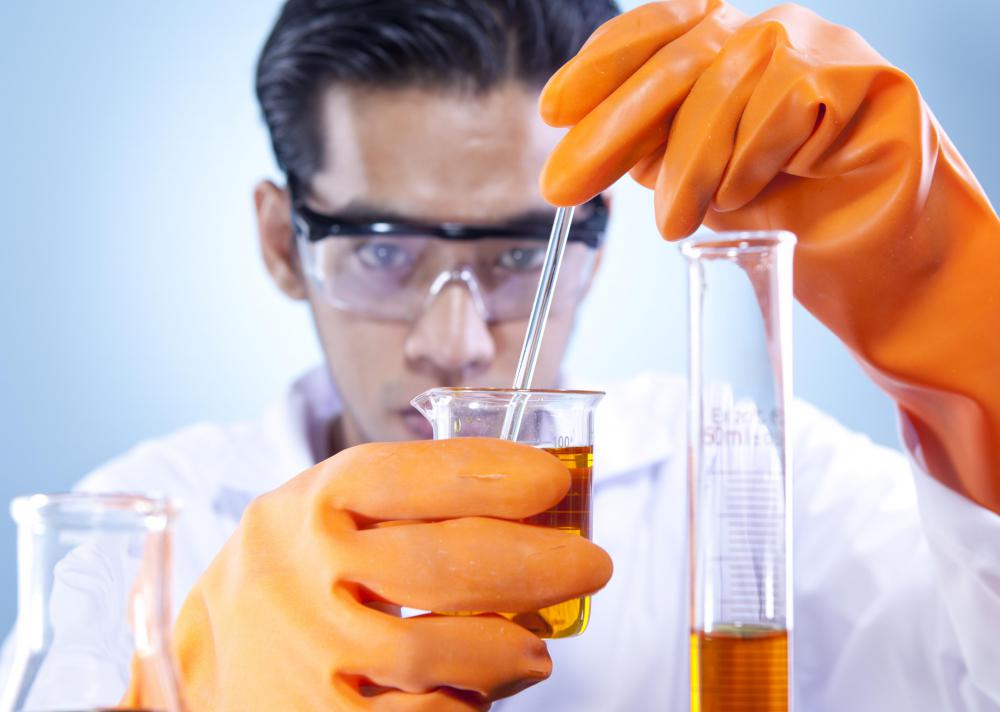At AllTheScience, we're committed to delivering accurate, trustworthy information. Our expert-authored content is rigorously fact-checked and sourced from credible authorities. Discover how we uphold the highest standards in providing you with reliable knowledge.
What Is Phenol Extraction?
Phenol extraction is a scientific process of extracting pure ribonucleic acid (RNA) and deoxyribonucleic acid (DNA) from a specific cell sample. The process mainly involves separating or removing the proteins from the cell, leaving behind the DNA and RNA. All over the world, phenol extraction is the most widely-used method for extracting pure samples of DNA and RNA.
The process of phenol extraction begins when the chemical compound phenol is introduced into the cell sample that usually sits in a water mixture. Just like oil, phenol’s chemical structure does not allow it to readily mix in with the water, so it will sink down just below the water, since phenol is denser. Chemists would then mix the two phases — the water and the phenol — to temporarily create an emulsion.

While the phenol is inside the aqueous layer, it will attract the protein elements of the cell sample and break them down. The DNA or RNA, in the meantime, will remain unbroken inside the water phase. Then, the container of the entire mixture will be put inside a machine called a centrifuge, which will help separate the mixture into the two original phases, the phenol and the water. Once the mixture is separated, chemists would extract the water containing the DNA or RNA, while the phenol phase is disposed of. The DNA undergoes a further ethanol precipitation to “de-salt” it and make it more concentrated.

Choosing phenol for DNA extraction is done because the compound is a non-polar molecule, while both the DNA and water are composed of polar molecules. In chemistry, the general rule is the polar molecules are best dissolved in polar molecules, and non-polar molecules can easily dissolve non-polar molecules. This means that while phenol dissolves the protein during phenol extraction, it will not dissolve the DNA or the RNA, thus they retain their structure and can be extracted out of the water. Phenol is so effective in dissolving proteins that the latter will be permanently broken down.

In a phenol extraction, the acidity of the whole mixture is important to effectively extract the DNA and RNA. Chemists recommend that the phenol should have a pH higher than 7 so that the water layer can successfully gather the DNA. At a pH of 4.5, which is already considered acidic, the RNA can already be gathered by the water phase. To change the phenol’s acidity or alkalinity, some chemicals are added, such as the compound tris or N-ethylmorpholine.
AS FEATURED ON:
AS FEATURED ON:













Discuss this Article
Post your comments